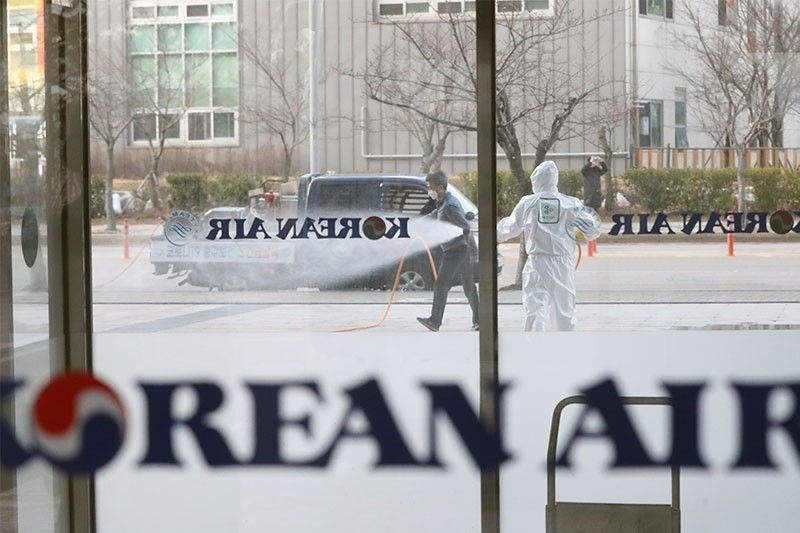Palace confirms travel ban on South Korea's North Gyeongsang province

MANILA, Philippines (Update 2 4:08 p.m.) — Just a day after it
As of this writing, there are 1,146 confirmed cases of the new virus in South Korea, resulting in 11 deaths. South Korea President Moon Jae-in on Tuesday tagged the situation in the country as "very grave" as the overall number continues to rise.
Cabinet Secretary Karlo Nograles on Monday said that none of the confirmed cases were Filipinos.
"Doon
Filipino tourists banned from travelling to South Korea
Health Secretary Francisco Duque III also said that Filipinos would also
Duque, however, clarified that only permanent residents, students, and OFWs living and working in South Korea
At the same briefing, Nograles disclosed that the inter-agency task force would
The DOH chief also confirmed that the 445 repatriates from the Diamond Princess cruise ship had safely returned and were already under quarantine at the New Clark City Athletes' Village.
He said that only Filipinos who tested negative for COVID-19
"There is still a possibility that our nationals may test positive upon their return. We have equipped hospitals with all necessary resources," Duque said.
"So we are ready just in case that eventuality happens."
This marks the latest ban caused by the COVID-19 scare after President Rodrigo Duterte extended his earlier travel ban to include all of mainland China along with special administrative regions Hong Kong and Macau.
The initial travel ban only included the Hubei province of China, where Wuhan, the epicenter of COVID-19,
Duterte initially opposed
It was also later revealed that this ban had also controversially included Taiwan, although this was later on lifted after it spawned outrage from OFWs and the Taiwanese government.
Imposing a travel ban on South Korea
In separate statements on Wednesday morning, lawmakers from both chambers called for the government to craft a resilience plan to offset the effects of the virus on the economy and on the tourism industry.
Government data shows that as of the end of 2019, some 62,398 Filipino nationals were living and working in South Korea. — with reports from Agence France-Presse
- Latest
- Trending
































